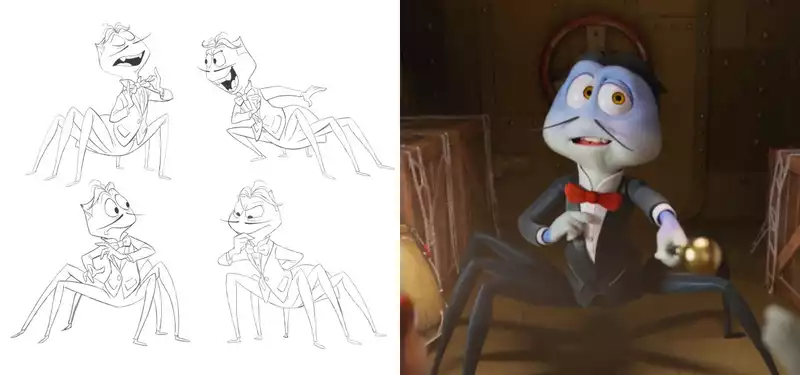Oct 24, 2023
See how the stellar cast of the film "Inspector Sun and the Curse of the Black Widow" came together.
This weekend, Viva Kids will release the Spanish animated feature film "Inspector Sun and the Curse of the Black Widow" in the United States.
Inspired by an Agatha Christie-style murder mystery, "Inspector Sun" unfolds on a seaplane trip from 1930s Shanghai to San Francisco. There, a ruined millionaire, a black widow spider, a hired assassin, and a smuggler come together in a noirish tale in which various species of insects, led by spiders, create their own world.
The screenplay for the film by Rocco Pucillo won the prestigious student-only Samuel Goldwyn Award in 2013. Inspector Sun is produced by The Thin Club Media and Gordon Box in association with 3 Doubles. It also received funding in the form of an Epic Mega Grant.
The following artwork was created by Costenko, Sylvain Deboissey, Victor Lopez, and Oscar Vargas.
Julio Soto: The design of the sun inspector is loosely based on the hunter spider (Sparassidae micropoda). The brief was this: think of a 1930s detective, a mixture of Hercule Poirot and Frank Drebin from The Naked Gun. The biggest challenge in designing this character, like the other spiders in the film, was to make him attractive, funny, and expressive, as opposed to creepy and scary. Also, to make the character reflect the elegance and glamour of the 1930s with his suit, bow tie, hairstyle, and mustache. The original concept had four eyes, but two were removed for clarity.
Soto: Arabella is the prototype of the 1920s pulp fiction femme fatale. She began her career as a cabaret singer and may have been something more before her eleventh marriage to millionaire tycoon Dr. Spindlethorpe. She is a beautiful creature, but also very dangerous, and her kisses will surely be your last. She is loosely modeled after Eva Green and Sharon Stone in Basic Instinct.
Soto: Jenny is lovably naïve, funny, and punctures serious scenes when necessary. In short, she's the partner the detective needs. She is similar to Judy Hopps in Zootopia. Her concept was initially based on the genus Jumping Spider, the largest spider family in the arachnid world, blessed with excellent vision and jumping ability.
Max Kostenko: I first worked on flies. Flies have large eyes and no nose or mouth, so we had to find a way to make the main character look cute, but not lose his fly-like appearance. While studying photographs of flies, I noticed that instead of a nose, flies have a feature that resembles a nose in shape, so I decided to simplify this structure and transform it into a nose that more closely resembles that of an animal (forgive the entomologist).
Kostenko: I was very interested in working on the mantis as well, as I had always been fascinated by this insect. Analyzing the shape of the mantis head, I decided to play with diamonds and find opportunities to apply this shape to other parts of the body. Wide ones are combined with very narrow ones. This is why the yellow jacket has wide shoulders and a narrow waist.
Kostenko: The beetle was probably the most difficult character to work with because the nose did not match the human expression. I tried many variations on the body shape and found an interesting shape with almost no neck. I finally decided to put the nose on myself. I imagined how convenient it would be to drink tea with one hand and play PlayStation with the other!




Post your comment